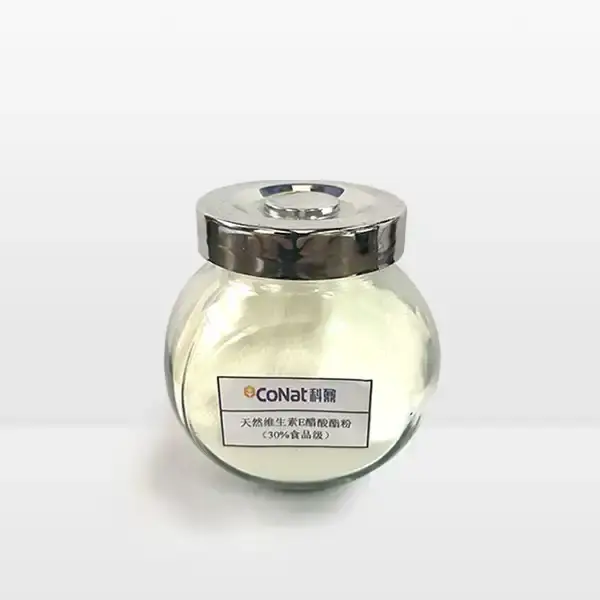- English
- French
- German
- Portuguese
- Spanish
- Russian
- Japanese
- Korean
- Arabic
- Greek
- German
- Turkish
- Italian
- Danish
- Romanian
- Indonesian
- Czech
- Afrikaans
- Swedish
- Polish
- Basque
- Catalan
- Esperanto
- Hindi
- Lao
- Albanian
- Amharic
- Armenian
- Azerbaijani
- Belarusian
- Bengali
- Bosnian
- Bulgarian
- Cebuano
- Chichewa
- Corsican
- Croatian
- Dutch
- Estonian
- Filipino
- Finnish
- Frisian
- Galician
- Georgian
- Gujarati
- Haitian
- Hausa
- Hawaiian
- Hebrew
- Hmong
- Hungarian
- Icelandic
- Igbo
- Javanese
- Kannada
- Kazakh
- Khmer
- Kurdish
- Kyrgyz
- Latin
- Latvian
- Lithuanian
- Luxembou..
- Macedonian
- Malagasy
- Malay
- Malayalam
- Maltese
- Maori
- Marathi
- Mongolian
- Burmese
- Nepali
- Norwegian
- Pashto
- Persian
- Punjabi
- Serbian
- Sesotho
- Sinhala
- Slovak
- Slovenian
- Somali
- Samoan
- Scots Gaelic
- Shona
- Sindhi
- Sundanese
- Swahili
- Tajik
- Tamil
- Telugu
- Thai
- Ukrainian
- Urdu
- Uzbek
- Vietnamese
- Welsh
- Xhosa
- Yiddish
- Yoruba
- Zulu
How is Vitamin E Acetate Powder Different from Other Forms of Vitamin E?
Vitamin E is a crucial nutrient that plays a significant role in human health, with various forms available in the market. Among these, vitamin E acetate powder stands out as a unique and versatile form of this essential vitamin. This blog post delves deep into the distinctive characteristics of vitamin E acetate powder, exploring its composition, applications, and how it differs from other vitamin E variants.
What Makes Vitamin E Acetate Powder a Unique Nutritional Supplement?
The Chemical Composition of Vitamin E Acetate Powder
Vitamin E acetate powder represents a specialized form of vitamin E that undergoes a precise chemical modification to enhance its stability and application potential. At its core, this compound is derived from tocopherol, the primary form of vitamin E found in nature. The acetate component creates a more stable molecular structure that distinguishes it from other vitamin E forms. Researchers have discovered that this unique formulation provides exceptional preservation capabilities, making vitamin E acetate powder an ideal choice for various nutritional and industrial applications.
Manufacturers carefully synthesize vitamin E acetate powder through a meticulous process that involves esterifying natural tocopherol with acetic acid. This chemical transformation results in a powder form that demonstrates remarkable resistance to oxidation and degradation. The powder's molecular stability allows for extended shelf life and versatile usage across multiple industries, including dietary supplements, cosmetics, and food fortification.
Bioavailability and Absorption Mechanisms
The absorption of vitamin E acetate powder presents a fascinating area of scientific investigation. Unlike some other vitamin E forms, this powder undergoes specific metabolic processes that influence its bioavailability. The acetate group attached to the tocopherol molecule plays a crucial role in how the body processes and utilizes this nutrient. When consumed, vitamin E acetate powder is hydrolyzed by enzymes in the intestinal tract, converting it back to its active tocopherol form.
Scientific studies have demonstrated that the unique structure of vitamin E acetate powder can potentially offer more consistent absorption compared to some other vitamin E variants. The powder's formulation allows for more controlled release and utilization within the body, potentially providing more reliable nutritional benefits. Researchers continue to explore the nuanced mechanisms of how this specific form of vitamin E interacts with human metabolic processes.
Manufacturing and Quality Control Considerations
The production of vitamin E acetate powder involves sophisticated manufacturing techniques that ensure optimal purity and potency. Pharmaceutical and nutritional companies employ advanced technological processes to create a consistent and high-quality product. These processes include careful selection of raw materials, precise chemical modifications, and rigorous quality control measures.
Quality control represents a critical aspect of vitamin E acetate powder production. Manufacturers must adhere to strict international standards to ensure the powder meets specific purity requirements. Advanced analytical techniques, such as high-performance liquid chromatography (HPLC) and mass spectrometry, are utilized to verify the powder's composition, potency, and absence of contaminants. This meticulous approach guarantees that vitamin E acetate powder maintains its nutritional integrity throughout the production process.

How Does Vitamin E Acetate Powder Differ from Natural Vitamin E Extracts?
Structural Variations and Molecular Stability
Natural vitamin E extracts typically exist in less stable forms compared to vitamin E acetate powder. The acetate modification introduces a molecular structure that significantly enhances the vitamin's resistance to environmental factors. This structural difference means that vitamin E acetate powder can maintain its nutritional properties more effectively under various storage conditions, including exposure to light, heat, and oxygen.
The acetylation process creates a more robust molecular framework that protects the core tocopherol structure. This enhanced stability translates to longer shelf life and more consistent performance across different applications. Researchers have found that vitamin E acetate powder can retain its nutritional value for extended periods, making it an attractive option for manufacturers in various industries.
Comparative Absorption and Metabolic Pathways
When comparing vitamin E acetate powder with natural vitamin E extracts, metabolic pathways reveal intriguing differences. The body processes acetate-modified vitamin E through specific enzymatic mechanisms that differ from those used for unmodified tocopherols. This unique metabolic approach can influence the vitamin's overall bioavailability and potential therapeutic applications.
Scientific investigations suggest that the acetate form may offer more controlled absorption rates compared to some natural extracts. The modified molecular structure allows for a more gradual release and utilization within the body's metabolic systems. This characteristic can be particularly beneficial in formulations designed for sustained nutritional support or targeted therapeutic interventions.
Application Versatility and Industrial Adaptability
Vitamin E acetate powder demonstrates remarkable versatility across multiple industries, surpassing many traditional vitamin E extracts. Its stable powder form enables easier incorporation into diverse product formulations, ranging from dietary supplements and functional foods to cosmetic and pharmaceutical preparations. The powder's consistent properties make it an ideal ingredient for manufacturers seeking reliable nutritional components.
The industrial adaptability of vitamin E acetate powder extends beyond traditional nutritional applications. Its stable molecular structure and fine powder form allow for precise dosing and seamless integration into complex formulations. Researchers and product developers appreciate the predictability and consistency that this specialized vitamin E variant provides across various manufacturing processes.
What Are the Practical Applications of Vitamin E Acetate Powder?
Nutritional Supplement Development
Vitamin E acetate powder has emerged as a cornerstone ingredient in advanced nutritional supplement formulations. Nutritionists and product developers recognize its potential to deliver consistent and reliable vitamin E supplementation. The powder's stable composition allows for precise dosage control and extended product shelf life, addressing critical challenges in supplement manufacturing.
Supplement manufacturers value vitamin E acetate powder for its ability to maintain potency across diverse product types. Whether incorporated into capsules, tablets, or powdered drink mixes, this specialized form of vitamin E offers exceptional stability and performance. Advanced formulation techniques enable developers to create targeted nutritional products that leverage the unique properties of vitamin E acetate powder.
Cosmetic and Skincare Innovations
The cosmetic industry has increasingly embraced vitamin E acetate powder as a valuable ingredient in advanced skincare formulations. Its molecular stability and antioxidant properties make it an ideal component in anti-aging creams, moisturizers, and specialized skincare treatments. Cosmetic chemists appreciate the powder's ability to maintain its efficacy within complex product matrices.
Research indicates that vitamin E acetate powder can contribute to skin health through its potential protective and nourishing characteristics. The powder's controlled release mechanism allows for sustained delivery of vitamin E's beneficial properties. Skincare formulators can leverage this ingredient to develop products that offer long-lasting nutritional support for skin tissues.
Food Fortification and Functional Food Development
Food scientists have recognized vitamin E acetate powder as a powerful tool in nutritional fortification strategies. Its stable powder form allows for seamless integration into various food products, including bakery items, dairy alternatives, and nutritional beverages. The powder's consistent properties ensure uniform vitamin E distribution throughout food formulations.
The food industry values vitamin E acetate powder for its ability to enhance nutritional profiles without significantly altering taste or texture. Manufacturers can precisely control vitamin E content in functional foods, creating products that offer targeted nutritional benefits. This approach supports growing consumer demand for fortified food options that promote overall health and wellness.
Conclusion
Vitamin E acetate powder represents a sophisticated nutritional ingredient with unique properties that distinguish it from traditional vitamin E forms. Its exceptional stability, versatile applications, and controlled metabolic interactions make it a valuable component across multiple industries.
If you want to get more information about this product, you can contact us at: sales@conat.cn.
References
1. Brigelius-Flohé R, Traber MG. Vitamin E: function and metabolism. FASEB J. 1999;13(10):1145-1155.
2. Zingg JM. Vitamin E: An Overview of Its Current Research and Future Directions. Crit Rev Food Sci Nutr. 2007;47(8):710-728.
3. Traber MG. Vitamin E Regulatory Mechanisms. Annu Rev Nutr. 1995;15:443-471.
4. Lodge JK, Traber MG. Vitamin E Biokinetics and Regulation of Metabolism. Curr Opin Lipidol. 1998;9(3):255-261.
5. Sen CK, Khanna S, Roy S. Tocotrienols: Vitamin E Beyond Tocopherols. Life Sci. 2006;78(18):2088-2098.
6. Packer L. Vitamin E is critical for mitochondrial metabolism. Mol Nutr Food Res. 2010;54(7):1061-1070.
YOU MAY LIKE
